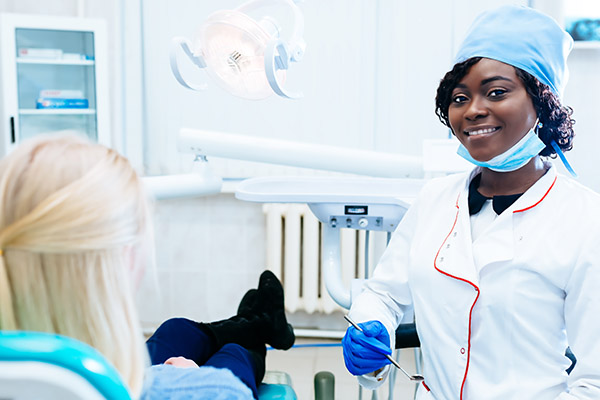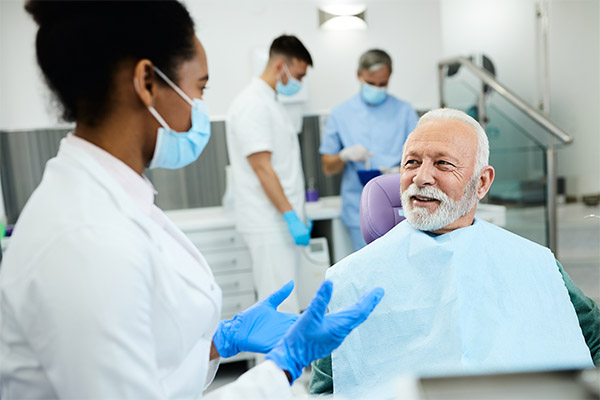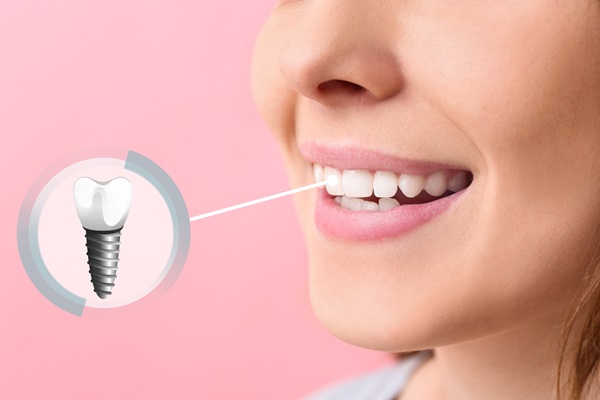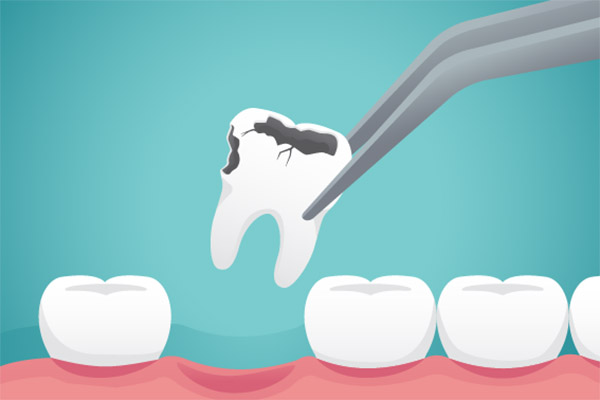Peri-implantitisSan Jose, CA
Peri-implantitis is an inflammatory gum condition that affects the soft tissues and supporting bone around dental implants. When left untreated, it can lead to progressive bone loss and compromise the long-term success of the implant. Fortunately, a thorough diagnosis and treatment plan can effectively manage peri-implantitis, restoring tissue health and preventing further complications to the dental implant.
The Perio4U Periodontics and Dental Implant Center San Jose can diagnose and treat peri-implantitis. Our team is here to protect your dental implant and overall oral health. Reach out to our San Jose office by calling 1-408-998-8008 to schedule an appointment.
Understanding Peri-implantitis
Peri-implantitis is a peri-implant disease. As defined by the American Academy of Periodontology, peri-implant diseases are inflammatory conditions that affect the soft and hard tissues supporting dental implants. Similar to conditions that affect natural teeth, bacteria build up on the base of the implant along and below the gum line. As the disease progresses, the bacteria will irritate the tissue, leading to inflammation and damage. When left untreated, this disease can cause bone deterioration, which increases the risk of implant failure.
Peri-implantitis is increasingly common, as dental implants are becoming more popular as a tooth replacement option. A narrative review published in the journal Frontiers of Oral and Maxillofacial Medicine (FOMM) found that peri-implantitis can affectanywhere from 9% to 22% of implant patients, depending on the study. The review determined that, with more than 5 million implants placed each year in the United States, more than a million implants could be affected by peri-implantitis.
Signs and Symptoms of Peri-Implantitis
Peri-implantitis symptoms are similar to traditional periodontal (gum) disease. Like gum disease, these symptoms evolve and worsen as the condition progresses. Common symptoms of peri-implantitis include:
- Bleeding when brushing or flossing around the implant site
- Redness in the gum tissue around the implant site
- Gum recession around the implant site
- Unpleasant taste in the mouth or bad breath
- Pain or discomfort
- Pus or discharge
- Loose or unstable dental implant
It is important to note that the severity of the symptoms will depend on the stage of the peri-implantitis.
Causes and Risk Factors of Peri-implantitis
Peri-implantitis is primarily caused by bacterial infections, similar to how gum disease affects natural teeth. As bacteria accumulate on the surface of the implant, it can lead to inflammation in the surrounding tissues. This bacterial accumulation is often due to poor oral hygiene, allowing the plaque to build up and harden into tartar.
Other contributing risk factors of peri-implantitis include the patient’s history of periodontal disease, smoking and other tobacco use, and systemic conditions like diabetes. Diabetes can hinder the body’s ability to fight infection and heal. Additionally, patients who grind or clench their teeth (bruxism) can increase the risk of peri-implantitis, as the excessive pressure damages the bone and soft tissue supporting the implant.
Peri-Implantitis Treatment Options
Non-surgical treatment options
In the early stages of peri-implantitis, the periodontist may use non-surgical therapy to control infection and inflammation. For example, they may use mechanical debridement. This non-surgical treatment option involves the dental specialist thoroughly cleaning the implant surface and removing plaque and tartar with specialized instruments. It is similar to the cleaning process in general dentistry.
In other cases, laser therapy or photodynamic therapy can disinfect the affected area without disturbing the healthy tissue. However, if the infection has spread or is resisting other treatment methods, the periodontist may prescribe systemic antibiotics. This medication can prevent the infection from spreading to other areas in the patient’s mouth and complements other treatment options.
Surgical treatment options
For more advanced cases of peri-implantitis, surgical intervention is often required to minimize the risk of further bone loss and fight the infection. Some of these surgical treatments include:
- Open flap debridement:The periodontist raises the gum tissue to gain access to the surface of the implant and thoroughly decontaminates it. This procedure allows the periodontal team to visualize the affected area and remove more of the granulation tissue and biofilm.
- Osseous (bone) resection:If the body cannot naturally regenerate the bone tissue, the periodontist may need to reshape the bone around the implant to create a healthier foundation for everyday functions.
- Regenerative procedures:Guided bone regeneration (GBR) uses bone graft materials and membranes to restore bone tissue around the implant. These procedures can re-establish a strong foundation and improve the patient’s long-term prognosis.
- Implant surface decontamination:This treatment includes the use of specialized instruments, chemical agents (e.g., EDTA or citric acid), or laser systems to detoxify the implant surface during a surgical periodontal procedure.
- Implant removal:While rare, there are situations where the periodontist may need to remove the implant, also known as explanation. They will preserve as much healthy bone tissue as possible to effectively replace the implant in the future.
Each surgical plan is tailored to the patient’s unique needs. The goal of these procedures is to promote healing and preserve implant stability whenever possible.
Questions Answered On This Page:What treatment options are available for peri-implantitis?
Pull Quote: ”For more advanced cases of peri-implantitis, surgical intervention is often required to minimize the risk of further bone loss and fight the infection.”
How to Prevent Peri-Implantitis From Coming Back
Consistent oral hygiene and professional follow-up care are crucial to minimize the risk of peri-implantitis from coming back. Patients should follow a robust routine of thorough brushing and flossing, especially around the implant site. The periodontist may recommend tools, such as interdental brushes and water flossers, to reach in between teeth that regular toothbrushes and string floss may miss.
Additionally, the periodontist will likely recommend follow-up visits following the initial treatment phase. These maintenance treatments allow the periodontist to evaluate the implant’s stability and the site for any signs of inflammation. These appointments can help extend the long-term success of the implant and facilitate immediate professional intervention if the inflammation returns.
Questions Answered on This Page
Q. What are the signs and symptoms of peri-implantitis?
Q. What are the common causes of peri-implantitis?
Q. What treatment options are available for peri-implantitis?
Q. How can I reduce the risk of peri-implantitis from recurring?
Frequently Asked Questions
Q. What is the difference between peri-implant mucositis and peri-implantitis?
A. Peri-implant mucositis is a reversible inflammation of the gum tissue around an implant, similar to early-stage gum disease (gingivitis). It does not involve bone loss, and you can typically manage it by improving your oral hygiene habits and maintaining regular professional check-ups and cleanings. In contrast, peri-implantitis involves both inflammation and bone loss.
Q. How can I prevent peri-implantitis?
A. The primary cause of peri-implantitis is poor oral hygiene. Fortunately, brushing and flossing around your implant can help prevent the buildup of plaque and debris in the soft tissue. Regular professional cleanings and follow-up visits with a periodontist can also detect early signs of peri-implantitis. Additionally, you can avoid using tobacco products and manage health conditions like diabetes to reduce the risk of developing this condition.
Q. How often will the periodontist check for peri-implantitis?
A. A periodontist and other oral health professionals will evaluate the dental implants at least twice a year. Patients with a history of gum disease and other risk factors may require more frequent visits; the periodontist may recommend visits every three months instead of the traditional six-month interval. This consistent care and monitoring ensure that patients receive the treatment they need if any issues develop.
Q. How common is peri-implantitis among people who smoke or use tobacco products?
A. While smoking and other tobacco use are a risk factor for periodontal disease, there are conflicting studies on whether this usage increases the risk of peri-implantitis. A 2023 narrative review found that there is insufficient evidence regarding the link between peri-implantitis and tobacco use. Nevertheless, limiting tobacco use or quitting altogether can reduce the risk of oral health issues and improve your overall health.
Q. Can peri-implantitis lead to implant failure?
A. Yes, peri-implantitis can cause implant treatment to fail. Bacteria accumulate around the implant site, leading to inflammation. This can cause the bone and soft tissues that support the implant to deteriorate. As the condition progresses, the implant will loosen and become unstable, leading to implant failure.
Contact Us
Perio4U Periodontics and Dental Implant Center San Jose is located at
386 S Monroe St
San Jose, CA
95128





